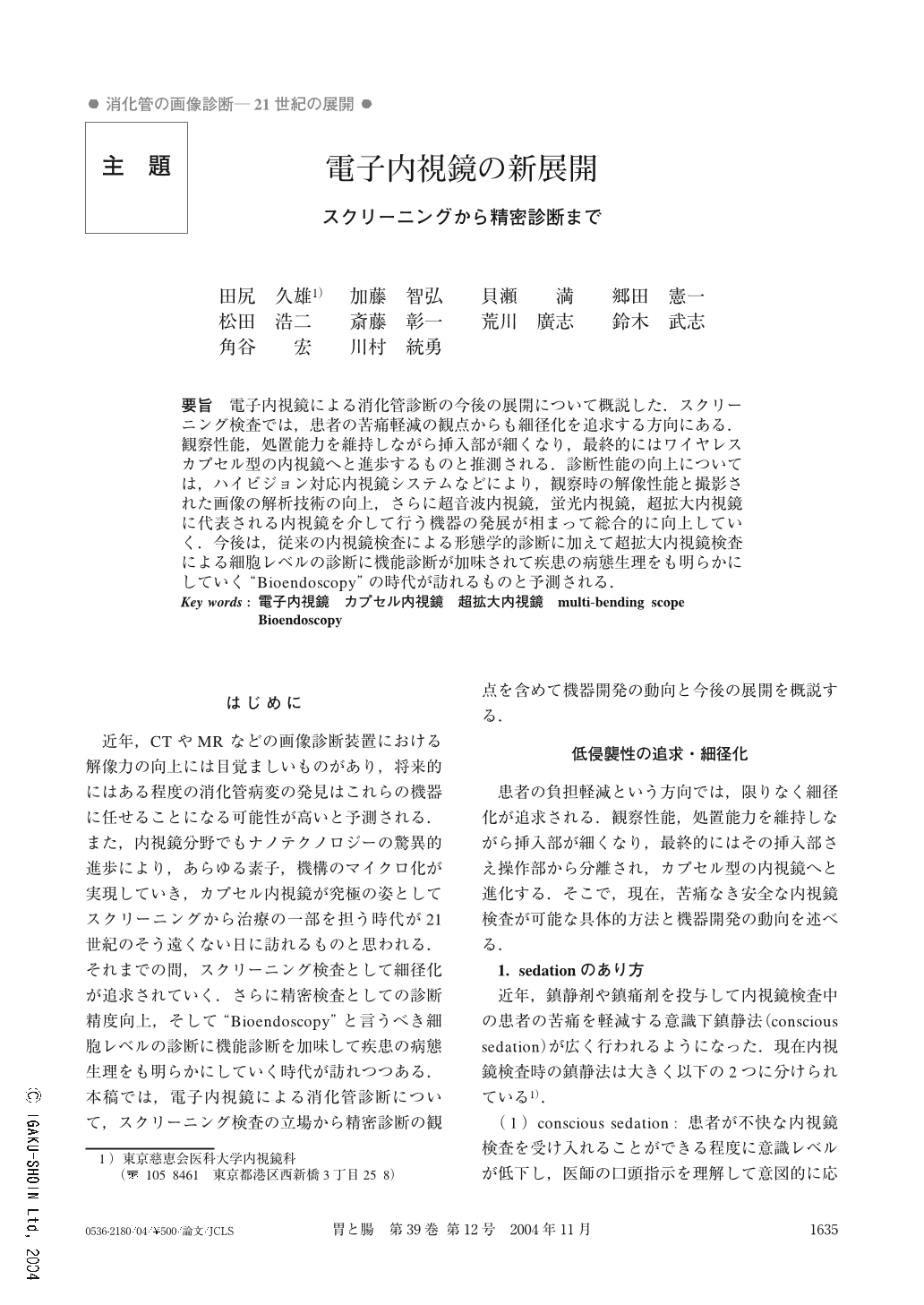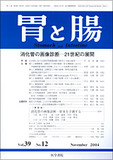Japanese
English
- 有料閲覧
- Abstract 文献概要
- 1ページ目 Look Inside
- 参考文献 Reference
- サイト内被引用 Cited by
要旨 電子内視鏡による消化管診断の今後の展開について概説した.スクリーニング検査では,患者の苦痛軽減の観点からも細径化を追求する方向にある.観察性能,処置能力を維持しながら挿入部が細くなり,最終的にはワイヤレスカプセル型の内視鏡へと進歩するものと推測される.診断性能の向上については,ハイビジョン対応内視鏡システムなどにより,観察時の解像性能と撮影された画像の解析技術の向上,さらに超音波内視鏡,蛍光内視鏡,超拡大内視鏡に代表される内視鏡を介して行う機器の発展が相まって総合的に向上していく.今後は,従来の内視鏡検査による形態学的診断に加えて超拡大内視鏡検査による細胞レベルの診断に機能診断が加味されて疾患の病態生理をも明らかにしていく“Bioendoscopy”の時代が訪れるものと予測される.
The future prospects for the development of gastrointestinal diagnosis by employing electronic endoscopy are outlined. Screening examinations are characterized by a trend to focus on the least invasive approach to minimize the pain that patients have to endure. This is heading in the direction of developing wireless capsule endoscopes with the insertion portions reduced in size while maintaining their observation and processing capacities and ultimately even with their inserted sections detached from the operating parts. Electronic endoscopes about 5 mm in external diameter have already been produced. We may expect that oral or transnasal endoscopic diagnoses will be safe and provoke minimum pain, the smaller they are in size. We may also expect diagnostic capacity to improve because resolution during examination will be upgraded and image-analyzing capability will increase by the utilization of endoscopic systems that produce high-resolution imaging, together with the development of diagnostic endoscopes represented by such sophisticated instruments as endoscopic ultrasonography, fluorescent endoscopy, and ultra-high magnifying endoscopy. The age of “Bioendoscopy” will be realized when the pathophysiological state of diseases can be clarified by combining the morphological diagnosis of conventional endoscopy, with diagnosis at the cytological level by utilizing ultra-high magnifying endoscopy and functional diagnosis by fluorescent or infrared fluorescence endoscopies. To illustrate the improved processing and operating capabilities, the current status of the development of multi-bending scopes, colonoscopes with adjustable hardness, endoscope position detecting units, and self-propelled endoscopes was described.
1) Department of Endoscopy, The Jikei University School of Medicine, Tokyo

Copyright © 2004, Igaku-Shoin Ltd. All rights reserved.


